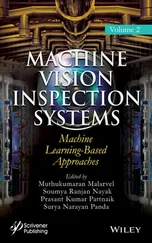Figure 7.2 Ratio of job placements to EAP by departments, 2016-2017
Figure 7.3. Job placements by minimum educational requirements
Figure 7.4. Word cloud: Most frequent job titles by job portals
Figure 7.5. Distribution of job placements by major occupational ISCO-08 groups
Figure 7.6. Job placements by experience requirements
Figure 7.7. Trends of the labour demand by major occupational ISCO-08 groups
Figure 7.8. Trends of the most demanded occupations at a four-digit level
Figure 7.9. Occupations at a four-digit level with a positive trend
Figure 7.10. Occupations at a four-digit level with a negative trend
Figure 7.11. Wage density
Figure 7.12. Jobs by type of contract
Figure 7.13. Duration density (monthly)
Figure 8.1. Education and wages (Colombian pesos)
Figure 8.2. Occupations and wages (Colombian pesos)
Figure 8.3. Years of experience and wages
Figure 8.4. Job placements and employment distribution by occupational groups (ISCO-08)
Figure 8.5. Wage distributions
Figure 8.6. Time series: Total employment and job placements, 2016-2018
Figure 8.7. Time series: Total unemployment and job placements, 2016-2018
Figure 8.8. Time series: New hires and job placements, 2016-2018
Figure 9.1. Occupational distribution of the Colombian workforce by skill level
Figure 9.2. Unemployment and informality rates and duration of unemployment by skill level
Figure 9.3. Average wages of formal and informal workers by skill level
Figure 9.4. Labour market composition of Colombian workers by skill level, 2010-2018
Figure 9.5. Employment growth by skill level, 2011-2018
Figure 9.6. Evolution of the unemployment rate by skill level, 2015-2018
Figure 9.7. Evolution of the informality rate by skill level, 2010-2018
Figure 9.8. Beveridge curve by (major) occupational groups
Figure 9.9. Percentage change in unemployed individuals by sought occupation
Figure 9.10. Percentage change in formal employment by occupation
Figure 9.11. Percentage change in new hires by occupation
Figure 9.12. Percentage change in hours worked for formal employees by occupation
Figure 9.13. Percentage change in job placements by occupation
Figure 9.14. Percentage change in mean real hourly wage for formal employees by occupation
Figure 9.15. Occupational hourly pay premia
Figure 9.16. Occupational pay premia within job placements
Figure 9.17. Number of occupations according to the percentage of indicators that suggest skill shortages
Figure A.1. Job portal comparison
Figure A.2. Job advertisement comparison within the same job portal
Figure A.3. Code comparison between job portals
Figure A.4. HTML code structure
Figure C.1. Fuzzy merge: The classification of companies
Figure E.1. SVM classification with job titles
List of Tables

Table 3.1. Characteristics of the Colombian workforce
Table 4.1. OECD quality framework and guidelines
Table 4.2. Possible sources that affect the quality of information from job portals
Table 4.3. Advantages and disadvantages of data sources for the analysis of labour demand
Table 4.4. The main differences between the Cedefop and the Colombian vacancy projects
Table 5.1. Average number of job advertisements and traffic ranking for selective Colombian job portals
Table 5.2. Job advertisement structure comparison within the same job portal
Table 5.3. Evaluation of job portals
Table 5.4. Job portals and their main characteristics
Table 6.1. Job description
Table 6.2. Basic data structure
Table 7.1. Total number of vacancies and job positions
Table 7.2. Top 20 most demanded occupations in Colombia
Table 7.3. Distribution of job placements by high-, middle-, and low-skilled occupations
Table 7.4. New job titles
Table 7.5. Top 20 most demanded skills in Colombia
Table 7.6. Skill groups demanded in Colombia
Table 7.7. Twenty new or specific skills demanded in Colombia
Table 7.8. Job placements by sector
Table 7.9. Yearly distribution of vacancies and job positions
Table 8.1. Occupational structure by education
Table 8.2. Top 10 occupational labour skills in demand by sector
Table 8.3. Top 10 occupational skill categories
Table 8.4. Monthly distribution of new hires, 2016-2018
Table 9.1. Occupational distribution of Colombian workers
Table 9.2. Occupational distribution of jobs sought by unemployed people in Colombia
Table 9.3. Occupations with higher informality rates
Table 9.4. Occupations with lower informality rates
Table 9.5. Occupations with higher unemployment rates
Table 9.6. Occupations with lower unemployment rates
Table 9.7. Skill mismatch indicators
Table 9.8. Skill shortage indicators and thresholds
Table 9.9. Occupations in skill mismatch
Table 9.10. Most demanded skills for occupations in skill mismatch
Table 9.11. Skills with a positive trend for “Web and multimedia developers”
Table 10.1. OECD quality framework and vacancy data
Table B.1. Example of the content of a scraped database
Table D.1. N-grams based on job titles
Table G.1. Vector representation, example one
Table G.2. Vector representation, example two
Table G.3. Nearest neighbour algorithm (Gweon et al. 2017)
Table G.4. Limitation of the nearest neighbour algorithm
Table G.5. An extension of the nearest neighbour algorithm (Part 1)
Table G.6. An extension of the nearest neighbour algorithm (Part 2)
Table G.7. Comparison between the analysed classification methods
Table H.1. Occupations demanded in Colombia
Table H.2. Occupational distribution of Colombian workers
Table H.3. Occupational distribution of the unemployed in Colombia
Table H.4. Informality rate by occupation
Table H.5. Unemployment rate by occupation
Table H.6. Occupations with positive employment growth, 2010-2018
Table H.7. Occupations with positive real wage trend, 2010-2018
Acronyms and Abbreviations

AM Metropolitan Areas (for its acronym in Spanish)
API Application Program Interface
APL A Programming Language
ASP Active Server Pages
BBVA Banco Bilbao Vizcaya Argentaria
BPM Business Process Management
CASCOT Computer Assisted Structured Coding Tool
CE Cambridge Econometrics
CEDEFOP European Centre for the Development of Vocational Training (for its acronym in Spanish)
CEPAL Comisión Económica para América Latina y el Caribe
CERES Regional Centres of Higher Education (for its acronym in Spanish)
CNC Computer Numerical Control
CONPES Consejo Nacional de Política Económica y Social
CSS Cascading Style Sheet
CVTS Continuing Vocational Training Survey
DANE Departamento Administrativo Nacional de Estadística
DEEWR Australian Department of Education, Employment and Workplace Relations
DfE Department for Education
DG Directorate-General
EAP Economically Active Population
EB Exabyte
ECLAC Economic Commission for Latin America and the Caribbean
EEA European Economic Area
EFCH Encuesta de productividad y formación de capital humano
ESCO European Skills, Competences, Qualifications and Occupations
Читать дальше













